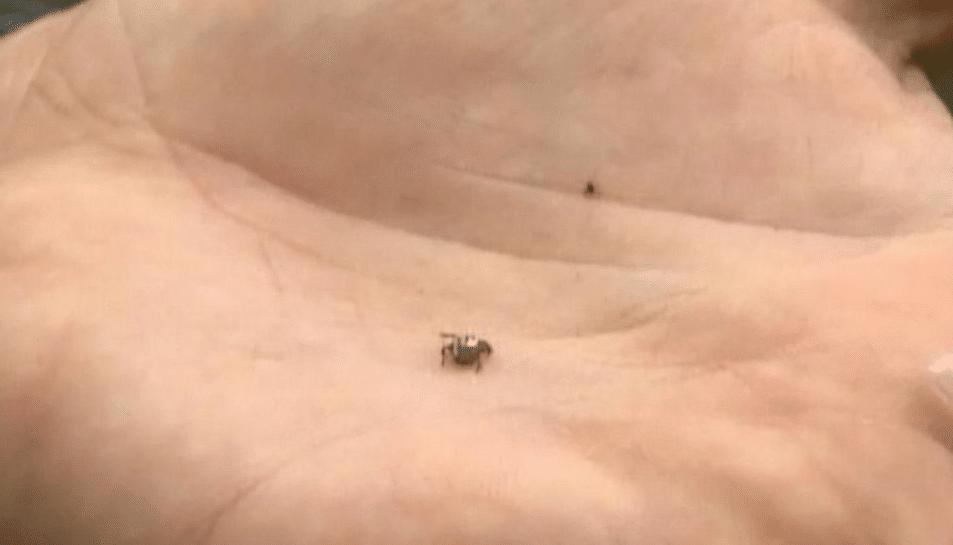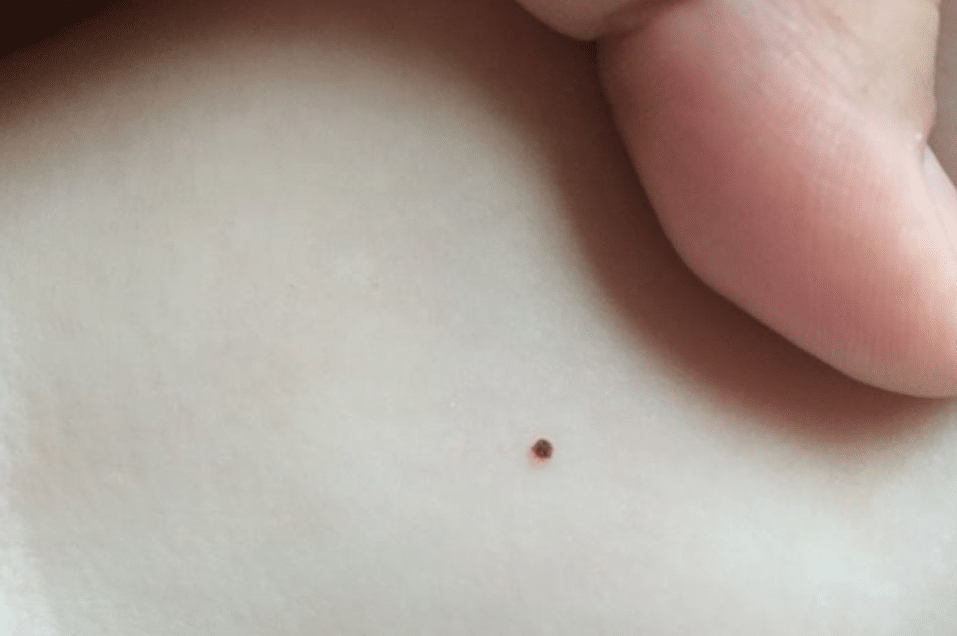How To Get Rid Of Seed Ticks In Yard
Seed Ticks: You probably already know about ticks and aim to avoid them as much as possible. Well, allow us to introduce you to seed ticks: a tiny form of ticks you probably never knew you needed to watch out for.
Beka Setzer wrote a disturbing Facebook post last summer that she shared again this year on the Love What Matters Facebook page about how her daughter Emmalee came in from playing outside, covered in little black dots. At first, Setzer thought they were seeds, but she realized when she tried to wipe them off that they were actually tiny tick. on her daughter’s body. They were super small, easy to miss, and left red splotches all over Emmalee’s body.

But after squinting our eyes and pulling our phones closer to our faces — our stomachs turned. There! On the second photo — a closer image — we spotted the tiny, blacked-legged ticks, (called nymph ticks) — atop our favorite poppyseed muffins.
Lyme disease, transmitted by tick bites, is one of the fastest-growing infectious diseases in the United States. Preventing Lyme disease and other tick-borne illnesses has been on America’s radar for a while, but we often think of ticks as those easily visible, half dime-sized bugs that burrow into our skin — or our dogs’.
How To Get Rid Of Seed Ticks
The foremost thing to do in seed tick treatment is to remove it from the body. Antibiotics are basically used to treat this bug. But there are few home remedies that may help you to get relief from the symptoms of a seed tick’s bite.
Read Also: Most Popular Workout Programs For Everyone
The best way of getting rid of ticks is to remove them as soon as possible from your and your pet’s body. Following are some of the methods that you can use for this.
Using Tick Repellents
Using tick repellents is a topic that is often discussed, debated, and even sometimes questioned. Therefore, the best advice for using tick repellents is provided by your family doctor, other health care specialists, and the Centers for Disease Control and Prevention.
Seed Tick Removal
This is another topic that includes lots of myths and misinformation. Therefore, the best answer for tick removal is also provided by medical professionals and the Centers for Disease Control and Prevention.
Seed Ticks Vs Chiggers
They are arachnids, which are close cousins of insects and include spiders, scorpions, and mites. In fact, chiggers are mites. A chigger is the larval stage of a mite in the family Trombiculidae. Nymphs and adults of chiggers are called harvest mites which are free-living and predators of small arthropods and their eggs. Your head may be spinning from the scientific jargon, so it’s important that I review some terms and basic biology.
Many tick species are known to carry diseases such as Rocky Mountain spotted fever, Colorado tick fever, tularemia, babesiosis, and Lyme disease, which they can spread by feeding off the blood of their hosts. They occur in every part of the United States, though large numbers are concentrated in certain areas.
Chigger mites hatch in April in the northern United States (year-round in warmer climes). They do not, as ticks do, feed off the blood, nor do they spread disease. But the enzymes they secrete can cause an allergic reaction resulting in two weeks or more of intense itching—which leads to scratching that may result in serious bacterial infection.
Seed Ticks On Skin
The following is a list of tick-borne diseases that may be found in the U.S., the usual tick vector(s), and the organism responsible for the disease that the tick transmits:
- Lyme disease (borreliosis) — Ixodes species (also known as black-legged ticks) including deer ticks (hard ticks) — vectors for Borrelia species of bacteria (a spirochete or spiral-shaped bacterium)
- Babesiosis — Ixodes species (hard ticks) — vectors for Babesia, a protozoan
- Ehrlichiosis — Amblyomma americanum or lone star ticks (hard ticks) — vectors for Ehrlichia chaffeensis and Ehrlichia ewingii bacterial species
- Rocky Mountain spotted fever — Dermacentor variabilis (American dog tick) and Rocky Mountain wood tick (Dermacentor andersoni) (hard tick) are the primary vectors and occasionally the brown dog tick (Rhipicephalus sanguineus); Amblyomma cajennense (hard tick) is the vector in countries south of the United States — vectors for Rickettsia bacteria
Baby Seed Ticks
Those are about a hundred baby ticks crawling across my hand and up my arm. This is actually a small tick bomb, as a big one can look like mud on your hand, the tick mass is so large. Can you believe I had the presence of mind to stop and take a picture before I washed those mother fuckers off? I can’t.

He came out to walk the land with us with the seller’s realtor—I guess this is normal, like having your lawyer present or something. Anyway, we warned him about the ticks. We told him to take preventative measures. But he totally dismissed this and showed up in slacks and loafers. He later told me that no amount of money from the sale of that land could make up for the torture by itching that he experienced from all the tick bites he got on that walk.
What Kind Of Ticks Are Seed Ticks?
Seed ticks. Seed ticks, the first-stage larvae of hard ticks, are not always recognized. They are tiny (0.6 mm) and have six legs, rather than the eight legs found on nymphal and adult ticks. Seed ticks may transmit Rocky Mountain spotted fever, tularemia, babesiosis, and Lyme disease.
How Long Do Seed Ticks Live?
In a typical house environment, unfed deer ticks are not likely to survive even 24 hours. Ticks on moist clothing in a hamper can survive 2-3 days. Ticks that have taken a blood meal may survive a bit longer but certainly not the 30+ days it takes to mature and bite again or lay eggs.
Do Seed Ticks Burrow Under Skin?
Ticks are tiny bugs, about the size of a sesame seed, which feed on blood. … Ticks burrow partway into the skin, bite, draw blood, and then drop off. The feeding tick’s mouth will be under the skin, but the back parts will be sticking out. When they are full of blood they are usually blue-grey in color.
How Do You Treat Seed Ticks On Humans?
- Clean the area around the tick bite with rubbing alcohol.
- Get your tweezers right down on your skin so you can grab as close as possible to the tick’s head.
- Pull up slow and firm.
- Clean the bite area again, and your hands, with rubbing alcohol or soap and water.




